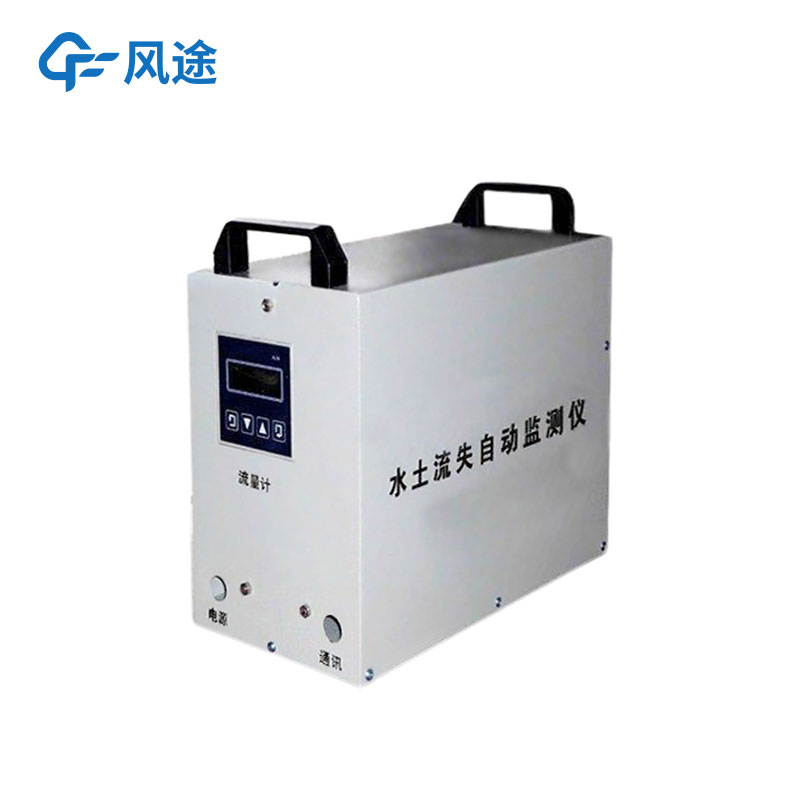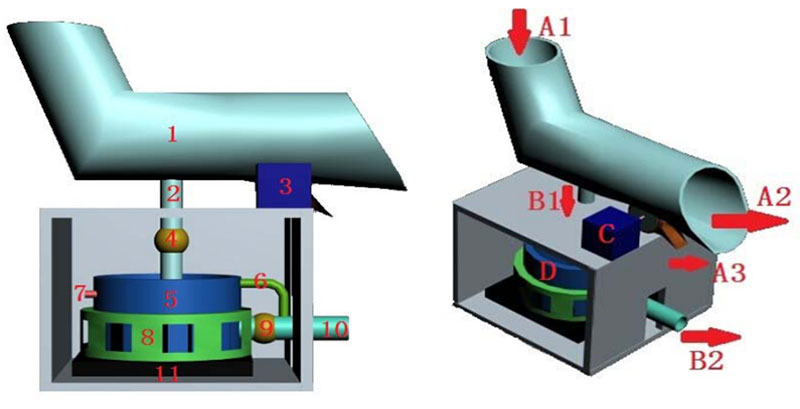Tianyi Sensor IOT Technology Co., Ltd
Sales Manager:Ms. Emily Wang
Cel,Whatsapp,Wechat:+86 15898932201
Email:info@fengtutec.com
Add:No. 155 Optoelectronic Industry Accelerator, Gaoxin District, Weifang, Shandong, China

Sales Manager:Ms. Emily Wang
Cel,Whatsapp,Wechat:+86 15898932201
Email:info@fengtutec.com
Add:No. 155 Optoelectronic Industry Accelerator, Gaoxin District, Weifang, Shandong, China

Model:FT-LS1
Brand:tianyi
1.Product overview of Soil Erosion Monitoring System
Soil Erosion Monitoring System is able to monitor other parameters related to soil erosion and is used to identify and assess areas at risk of soil erosion.In our water conservation experiments, whether it is measuring data from runoff fields or small watershed soil erosion, a lot of manual work will occur, which causes many work inconveniences.After the research and development of our company's FT-LS1 type soil erosion automatic monitoring device product, it replaced a lot of manual work.After years of experiments and use results, the flow error is within 3%.The error of silt content is less than 5%, and the performance and appearance of the product have been updated for a long time and have made great progress.
The automatic soil erosion monitoring system is mainly composed of a data acquisition and storage master, sand content measurement sensor, surface flow sensor component, and rain sensor.The rainfall intensity and its changes over time and the total rainfall and rainfall duration are measured by the rainfall sensor.The surface flow sensor component automatically measures the surface flow, and calculates the surface runoff flow that changes over time through the central control computer software and parameter settings to obtain the real-time change of runoff flow.In the system design, the sand content measurement sensor is used to measure the runoff sand content in real time according to the characteristics of rainfall/runflow changes.
Through the work management/data storage software and the main control and control, the process data of sediment content, runoff and rainfall measured by each sensor are managed and stored, and the measurement data is remotely transmitted to the management and monitoring center.
2.Product features of Soil Erosion Monitoring System
1.Unattended all-weather, automatic measurement and storage: runoff, runoff sand content, sand transport capacity
2.Power supply: Real-time data automatic collection and storage can be powered off for 7 days
3.The automatic soil erosion monitoring station work management data acquisition and storage master can store a large amount of data locally, and can download data through the RS232 interface on site; or transmit data to the management center via wireless when there is a remote request.
4.Solar power supply, the normal state is power-saving and dormant when there is no rainfall or runoff.
5.It has the function of real-time online monitoring and displaying dynamic processes and curves and historical data download on computer software.
6.The sampling frequency and adjustment clock can be set freely on the data management master
7.The central control computer software can draw runoff, sediment content, rainfall, scene, runoff, seepage, soil erosion, etc.based on the collected data.
3.Soil Erosion Monitoring System Sensor Work Instructions
1.Working process of silt and sand content sensor
The surface water body enters the pipeline from A1, flows out through A2 and pushes the flow sensor.Some water body is discharged from A3.Processor C calculates the real-time flow based on the flow rate obtained by the flow sensor.B1 collects the surface water body and is sent to the weighing sensor.Sensor D sends the collected data to processor C to obtain the sediment content after processing.After obtaining the data, sensor D discharges the internal sample from B2 to prepare for the next sampling.Processor C outputs external devices through 485 or serial port.
Icon Description:
1.Surface runoff pipe
2.Sampling tube
3.Flow sensor
4.Sample tube solenoid valve
5.Sample tank
6.Liquid level holder
7.Liquid level sensor
8.Sample slot bracket
9.Water drain solenoid valve
10.Drain pipe

3D structure diagram of silt content collector
2.Silt and sand content sensor function
(1)It can realize real-time continuous measurement, data transmission and data analysis processing of the multi-path flow silt content and flow at the same time;
(2)Unattended all-weather, automatically measure and store data;
(3)The work management data acquisition and storage master can store a large amount of data locally and download data through the R232 interface on site;
(4)It has real-time online monitoring on the upper computer, displaying the dynamic processes and curves of each measurement parameter, and downloading historical data;
(5)The sampling frequency and adjustment clock can be set freely on the data management master;
(6)Good stability, high accuracy of independent research and development of sensors, strong stability, and strong anti-environmental interference capabilities.

4.Soil Erosion Monitoring System Technical Indicators
| name | Technical Specifications |
| Flow measurement | |
| Surface flow | Measuring range 0.1L/s~99999.99m/h |
| Measurement error <5% | |
| Cumulative data is 4290000000.00m3 | |
| Runoff flow | Measuring range 3~2400mL/s |
| Relative error <3% | |
| Sand content measurement | |
| Measurement principle | Weighing method |
| Sampling interval | 1-99 minutes, adjustable |
| Measurement accuracy | Measuring range 0.5~100kg/m3, measurement error <5% |
| Measuring range 0.8~200kg/m3, measurement error <8% | |
| Sensitivity | 0.2 kg/m3 |
| Rainfall measurement | |
| Measurement range | 0~280mm/h |
| Measurement accuracy | ±2% (Indoor static test, rain intensity is 2mm/min) |
| General indicators | |
| Communication method | RS485 |
| Sampling interval | 1~10 minutes |
| Working power supply | AC220V DC12V |
| Equipment power | <5W |
| Operating temperature | 0 (no freezing)~ 60℃ |
| Working life | >8 years |
The Nine - element PV Weather Station is a meteorological monitoring device specifically designed for photovoltaic power generation systems.Distributed photovoltaic power generation is mainly for self - consumption by users on the user side, and the surplus electricity is fed into the grid. The norm...
The Eleven - element Photovoltaic weather station is a meteorological monitoring device used in the field of distributed photovoltaic power generation, capable of real - time monitoring of multiple meteorological elements:Scheme 1: Wind speed + Wind direction + Average wind speed + Temperature + Hum...
In the agricultural field, the traditional extensive irrigation method relying on experience is likely to cause either water resource waste or insufficient irrigation. With the rise of precision agriculture, different crops have varying requirements for soil temperature and humidity at different gro...
The Micro water quality station is a highly integrated professional device that combines various functions such as sensor technology, data collection and processing systems, and communication modules. Its working principle is based on the monitoring of various parameters in the water body by differe...